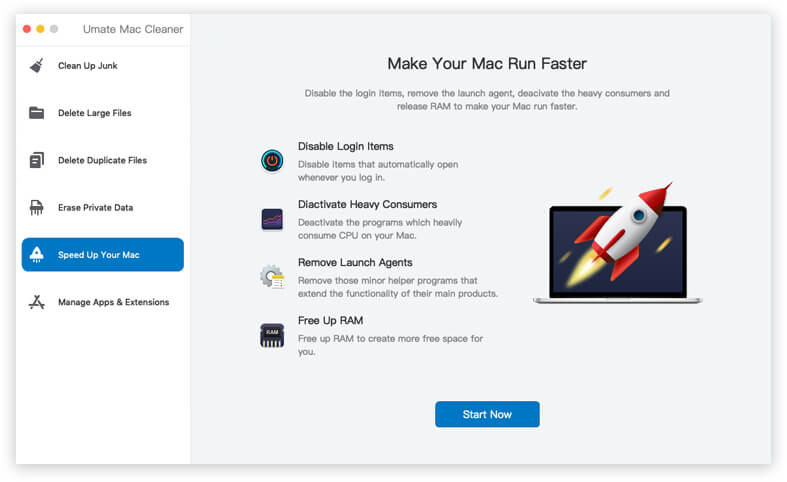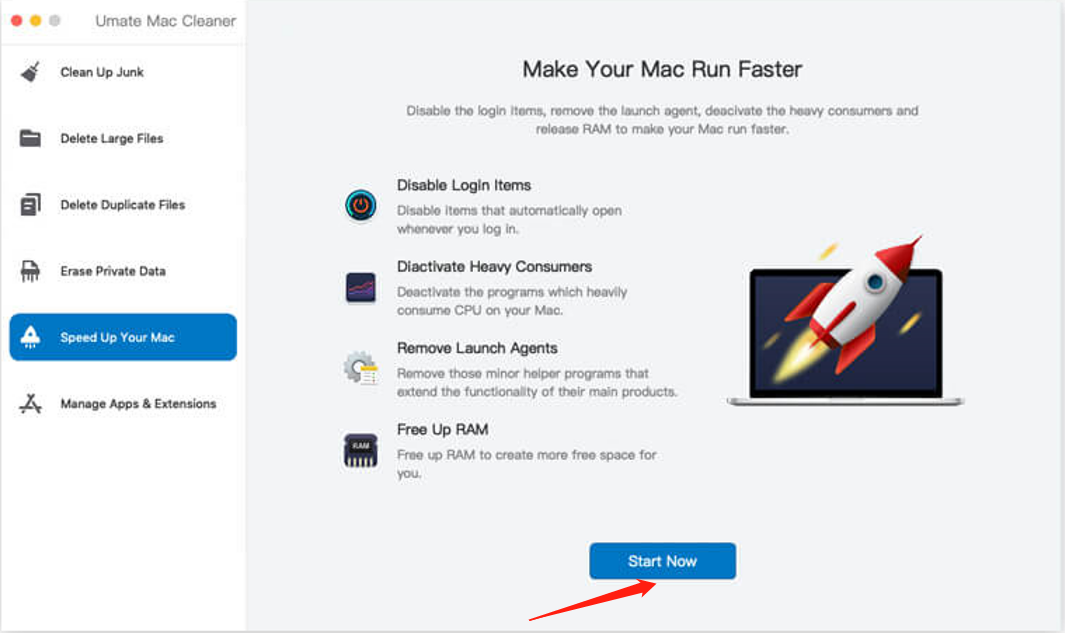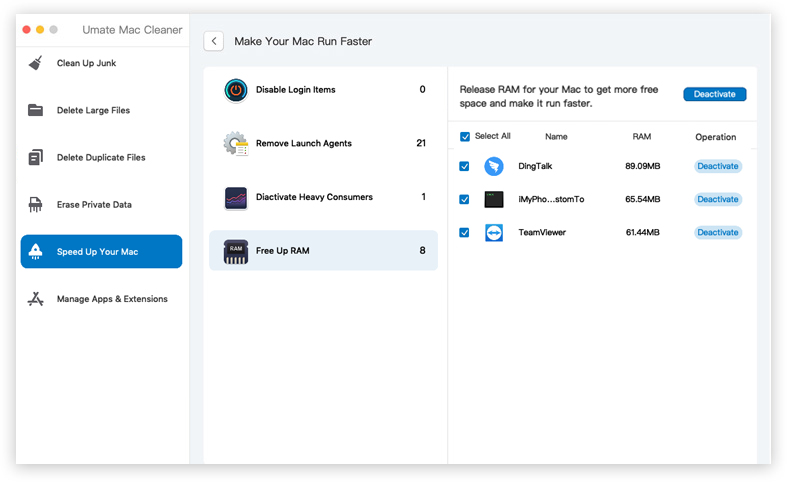Mac computers are inherently fast. After all, their GPU performance is quite decent. But much like most devices, the computer will slow down as time passes by. This is a common occurrence and it’s more uncommon if it doesn’t slow down.
However, there are rare instances where the slowdown process may seem abnormal. Perhaps your computer slowed down only one year after use. For your reference, a computer should start slowing down only after three years of regular use. Maybe the rate at which it’s slowing down is considerably faster than with other Mac computers. Either way, these scenarios definitely seem strange and will get you asking, “What is slowing down my Mac?” Below are seven answers to that question.

Reason #1: Not Enough Free Disk Space
It may sound surprising, but a computer’s disk space act
ually has something to do with its performance. It goes like this: the more free disk space your Mac has, the fast it can perform. This is because your computer often creates files as a byproduct of executing certain tasks. For instance, when you visit a site on your browser, the system creates a cache that contains files about that site. Similarly, when you open an application, the system creates cache files for that particular app.
When your computer no longer has as much space as it had when you first purchased it, the system will struggle to create the necessary files to execute tasks since there’s not much storage to go around. This results in a much slower operating system.
To fix this, you simply have to make enough disk space, and you can do that by deleting unnecessary files. You can do it manually, or you can use a cleaner software. If you wish to do the former, here’s what you can do:
- Empty the Trash
- Clear your browser cache
- Delete the system cache
- Clean up the Desktop
- Erase unused language files
Since executing these cleanup methods will likely take a while, you can also use the second method which involves a cleaner software. For that, we suggest Mac Cleaner. We’ll discuss how you can use that software in later sections.

Reason #2: An App Is Consuming to Much RAM
Every application consumes a certain amount of RAM. Some consume only a little amount, while others consume RAM excessively. When your computer no longer has RAM left over, it’ll slow down considerably. That’s why it’s not advisable to open too many apps since they’ll deplete your Mac’s computing power. Unfortunately, there are certain apps that consume too much RAM. That might be the reason why your Mac is slowing down despite you only running a few apps.
To fix this issue, you must find which app is hogging all your RAM, and you can do this with Activity Monitor. For your reference, Activity Monitor is an app that allows you to see in-depth details about every activity on your computer, including apps, which include the GPU, CPU, and RAM it consumes. Here’s how you can use it to find the problematic app:
- Open Finder on your Mac.
- Click Applications from the left sidebar.
- Find and open the Utilities folder.
- Look for the Activity Monitor. Double-click once you find it to open the app.
With this, you can very easily spot which app is causing issues on your computer and slowing it down. Once you figure out which is the problematic app, simply close it hovering on that app and clicking the X icon that pops up on its side.

Reason #3: Your Computer Is Running to Many Apps And Processes
If none of the apps has a particularly high RAM consumption, then it might be that your computer is simply running too many apps and processes. Fortunately, you can also confirm this by using the steps mentioned in the previous section.
In Activity Monitor, you can find the apps and processes your computer is currently running. It also shows the RAM capacity of your computer, which is the Physical Memory, and the memory currently being used, Memory Used. Using the above image as an example, the RAM is 4.00 GB, and the computer is currently using 2.14GB, which is just the right amount to not cause the computer to slow down. However, if the Memory Used is at least 80 % of the Physical Memory, there’s a good chance you’re running too many apps and processes. To fix this, simply close the unnecessary ones.

Reason #4: An App Is Incompatible With Your macOS
If none of the previous two is the issue, then perhaps an app is incompatible with your macOS. If you didn’t know, certain apps are incompatible with specific devices. For example, you may have forcefully and unintentionally installed the Windows version of Dropbox instead of its Mac version. If so, then it’s only natural that the computer will act up.
The problem should be easily fixed by closing that app, but the question is, how do you figure out which app is incompatible with your macOS? For that, you’ll have to close one app at a time. Then, use your computer for five to ten minutes to see if it’s still slow. If yes, then the problematic app is probably still open. If not, then you most likely have successfully closed the problematic app. Do this until your Mac is no longer slow. It might be a bit of a hassle, but it’s the only solution to this issue.

Reason #5: Your Computer Has Virus Or Malware
It’s no secret that viruses and malware can cause a variety of problems on a computer. It can lead to error messages popping up, files going missing, sudden crashes, and most importantly, extremely slow performance. The solution to this issue is simple, just find the virus or malware and eliminate it. You can do this by installing an antivirus since it’s unlikely you’ll be able to find it without the help of a program of some sort. Scan your computer with the antivirus, and if it detects something, just do what the software tells you to do. This will likely weed out the virus or malware-infested file and solve the issue.
Reason #6: There Are Problems With Your Disk
The hard disk might be protected inside the CPU, but there’s a chance for it to sustain damage, be it externally or internally, and this can cause severe issues. It can cause files to be corrupt, apps to suddenly close, the computer to not start up, and most importantly, the computer to slow down. Though it might not be possible to pinpoint what the problem exactly is, you should be able to repair it using Disk Utility. For your reference, Disk Utility is the program that allows you to manage external and internal drives. It can also repair disk-related issues. Here’s how you can use it for your purposes:
- Open the Disk Utility app on your computer.
- Select the disk you want to repair by clicking on it on the left sidebar.
- There should be a couple of options at the top of the window. Click First Aid from these options.
- Click Run and just follow the onscreen instructions from then on.
- Once it’s complete, click Done.
- Repeat these steps on every disk connected to your Mac computer.
This should fix any hard disk-related issues on your computer.

Reason #7: The Computer Isn’t Up-To-Date
If you have yet to figure out the answer to your question, “What is slowing down my Mac?”, the issue might be because your computer is not up-to-date. It’s only natural for the computer to slow down if you haven’t updated it in forever.
Therefore, you should be able to fix this issue by simply updating your Mac, and here’s how you can do that:
- Click the Apple icon from the top-left corner of the computer screen.
- Select System Preferences.
- Click Software Update.
- On the Software Update, there should be a button that either says Upgrade Now or Update Now. Just click whatever that button is then follow the onscreen instructions from that point onwards.
Updating the macOS will patch up bugs, glitches, and other issues which might be causing your computer to slow down.

BONUS: Speed up Your Mac Using Mac Cleaner
By now, you should have already realized what’s causing your Mac to slow down. It’s a combination of many things, making it difficult to speed up your computer as you’ll have to resolve the underlying issues. You have to get rid of background processes, force quit hidden apps, and many more. Naturally, doing all of these would take a lot of time. The good news is there are tools out there that can execute these operations in just a few clicks. Mac Cleaner is one such tool.
Mac Cleaner is a modular software that specializes in cleaning a Mac computer’s storage, hence the name. Though that’s its main function, it also has features that can speed up your Mac. Here’s how you can use that specific feature:
Step #1: Launch Mac Cleaner on Your Computer
First off, you need to gain access to the Mac Cleaner software. For that, you must open your browser and head to the Mac Cleaner official website. There, you’ll see a Download Now button. Click it to download a file which you must then run to install the software. Once the installation is complete, the software will automatically open.

Step #2: Choose the Speed up Your Mac Module
Mac Cleaner has a total of six modules, (1) Clean Up Junk, (2) Delete Large Files, (3) Delete Duplicate Files, (4) Erase Private Data, (5) Speed Up Your Mac, and (6) Manage Apps & Extensions. Each module has different functionalities, and you can only use one module at a time. Of course, you must use the module that fits your purpose, which, in this case, is the fifth module, Speed Up Your Mac. As the name suggests, it’s a module that allows you to perform operations that will boost the performance of your computer. Simply click on it from the left sidebar to select that module. Choose the Speed up Your Mac Module

Step #3: Click Start Now
Upon selecting the Speed Up Your Mac module, the software will display information pertaining to its features. You can read the text to learn more about it. But once you’re done, you must click the Start Now button to proceed to the next step.

Step #4: Choose an Item
The software should now display a list of items. In the case of Speed Up Your Mac, there should be a total of four items, and they correspond to the actions you can take using the module. Here’s a look at each item and what they do:
- Disable Login Items closes apps and processes that automatically open when your computer boots up.
- Deactivate Heavy Consumers disables apps and processes that consume CPU excessively.
- Remove Launch Agents force quits unnecessary processes that open alongside other programs.
- Free Up RAM closes app processes that consume RAM needlessly.
Select an item according to your end goal by clicking on it. You’ll then get another list on the right side of the software. The list will contain the apps and processes that you can deactivate. Simply select the items you wish to deactivate by clicking on their respective checkboxes or click Select All to include all items.
Step #5: Deactivate the Apps/Processes
After selecting the apps and processes you want to disable, click the button at the upper-right corner of the window which should say Deactivate. This should finalize the process, though it may take a while to completely deactivate the processes.
Upon doing this, you’ll notice a slight to significant boost in your computer’s performance. But of course, in some cases, it may not be noticeable. Make sure you do this regularly and you shouldn’t have any performance issues any time soon.

Takeaways
There are many reasons as to why your Mac is slowing down, too many, in fact, that you won’t be able to keep count of all of them. That’s why answering the question, “What is slowing down my Mac?” can be a bit difficult, and it would be a challenge to pinpoint exactly what caused the decrease in performance. However, the same cannot be said for the question, “How can I speed up my Mac?” With software like Mac Cleaner, it’s actually quite easy to speed up your Mac, as long as you know what you’re doing. Of course, you can also do it without software, though it’ll be a bit more challenging.
Latest Articles